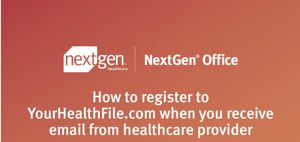In this post, you’ll learn strategies to avoid missed revenue and save staff effort by using smart efficiency improvements, such as checking insurance information up front. You’ll also learn how you can get back to caring for patients, not chasing payments—and the secret to achieving strong financial outcomes. Finally, you’ll discover how you can get paid quickly, easily, and fully—all while addressing your patient demands for an improved, more efficient experience.
Today’s patients want easier, more efficient visits with healthcare providers
Many patients are frustrated by long wait times and practice inefficiencies. They feel their care quality suffers when providers are too crunched for time. They want simpler payment processes and more transparent billing.
Meeting patient expectations is the cost of doing business
Your practice can save time and money by delivering on patient expectations. You can better keep up with regulatory demands and reporting requirements—and avoid unsatisfied and unresponsive patients—when you employ best practices that address patient needs.
STEP 1: SIMPLIFY YOUR CHECK-IN PROCESS AND ENHANCE THE PATIENT EXPERIENCE
Prevent missed appointments to save time and money
When patients fail to show up for an appointment—or find the office visit experience frustrating—your practice loses time and money, while also risking patient loyalty and satisfaction.
There are two easy ways to fix these issues:
- Simplify the check-in and checkout process
- Use proven tactics to improve patient engagement
It’s easier than you may think to achieve both. Today, tools are available that allow your patients to fill out paperwork and new patient forms in advance of their office visit, electronically. By using these tools, staff can avoid manual data entry and resulting errors. They also help streamline visits and reduce frustration while improving patient satisfaction.
Another important way to boost patient engagement and reduce missed appointments is by using patient communication tools. The right patient portal can help your staff expedite and automate communications such as appointment reminders, balance due alerts, and referral paperwork. Plus, you can engage with patients in the manner you prefer—via text, phone, or email—leading to happier patients, reduced staff burden, and a more efficient overall office process.
Learn more about the NextGen Office Patient Portal
Avoid missed revenue and save staff effort— check insurance information upfront
When your practice uses the right tools to check insurance eligibility before, or at the beginning of, a patient visit, you can avoid denied claims, expedite copay requests, and ensure more accurate billing information. This is particularly important now that most patients have health savings accounts and high-deductible health plans. These plans make it more expensive to manage chronic illnesses and often demand patients pay out of pocket for prescriptions, office visits, and diagnostic tests until they reach their deductible.
Reduce the frustration caused by long wait times and practice inefficiencies
Efficiently moving patients through your practice, and avoiding “dead time,” requires careful visit planning. The bonus of doing it well? Increases in physician productivity. As discussed above, your practice can leverage tools to simplify and streamline patient check-in/checkout and form processing. Another way to help patients avoid the waiting room entirely is by offering the convenience of at-home and virtual visits. Finally, your practice can streamline front- and back-office administration—and more efficiently manage the business of healthcare—using integrated eligibility checks, claim status verification, clearinghouse functionality, patient portal conveniences, and messaging solutions.
STEP 2: IMPROVE TIME MANAGEMENT AND REDUCE RESOURCE DRAIN
Fifty-three percent of primary care providers report time pressure in the clinical encounter—and many providers describe emotional exhaustion and the fear of making clinical errors from lack of time. Increased demands during shorter patient visits mean providers can address fewer health care issues and potentially understand issues less thoroughly. These shortcomings translate to decreased patient satisfaction, excess ER usage, and nonadherence to treatment plans.
Improve patient and staff satisfaction by finding time to treat patients more effectively
When your practice communicates with patients effectively, everyone saves time, improves outcomes, and avoids frustration. Get there by leveraging portals, telehealth visits, and advanced messaging tools.
The right patient portal can: Improve physician/patient communication by helping reduce data entry demands, prevent resulting errors, lessen staff interruptions, expedite patient check-in and appointment scheduling/reminders, and streamline patient visits.
The right EHR solution can: Streamline charting, tailor clinical workflows, save staff time, and reduce time spent searching for data.
The right PM solution can: Create workflow efficiencies across the revenue cycle that result in real operational and clinical improvements. It can streamline scheduling, centralize staff calendars, configure to meet the needs of individual clinicians, save time via eligibility checks, and expedite patient and productivity reports.
Keep up with regulatory demands and reporting requirements The regulatory and reporting demands on today’s practices are ever changing and increasingly challenging. The good news is—you can make documentation easier. Before a physician treats a patient, empower medical assistants and other non physician staff to handle lab work, vaccines, and quality documentation. The right EHR solution, PM, financial, patient portal, interoperability, population health, and analytics solution can help you streamline charting and documentation. Your financial, population health, and patient portal solutions should help you monitor your business with easy reporting and benchmarking. Your interoperability solution should help you easily exchange health information from within the clinical workflow and at the point of care.
Step 3:b . STREAMLINE COLLECTIONS AND SOLVE BILLING ISSUES
Today more than ever before, practice revenue is coming from patients. With healthcare premiums exceeding the rate of inflation annually for the past 14 years, better-performing practices are taking every step possible to minimize bad debt and optimize collections.
Thus, it's important to proactively bill patients and collect balances at every opportunity. It’s clear that no amount of cost cutting can compensate for inadequate patient collections. Luckily, there are proven collection processes that can help overcome these payment roadblocks.
Implement the wrong billing and collections technology (or use the wrong mix) and you’ll likely face a significant loss of productivity, slow reimbursement, and underpayments. If you’re not sure where you stand, it’s time to ask for expert help.
Simplify payment processes and provide transparent billing
Making patients happier and increasing their likelihood of paying may be as simple as using transparent billing processes, much like those you see with most household bills. How do you get there?
-
Provide a convenient, reliable way for patients to understand their payment responsibilities before scheduling service or treatment (deliver a full breakdown of costs up front)
-
Proactively discuss payment plans and financing options
-
Send appropriate balance reminders
-
Leverage up-to-date technology, like kiosks, to improve up-front collections
Motivate your patients so everyone wins
Due to a growing increase in patient payment responsibilities, providers can only expect to collect 50% to 70% of a balance after a patient visit. Because patients pay their balance slower than third-party insurers, providers must incentivize patients to resolve balances quickly—ideally at the time of service.
How can you successfully incentivize your patients to pay?
Enable electronic transactions to lower operating costs and increase payments. Leverage automation to send patients timely statements and balance reminders by phone, text, or email. Stop billing weeks after an appointment for remaining balances. Accept multiple forms of payment and offer more than one way to pay (at the time of service, online, by phone, via payment plans, through automatic debiting). These approaches improve cash flow, increase collections, and lower write-offs.
Successful denial prevention
Using a robust suite of patient collections tools is essential. But to thrive, not just survive, look for a partner that will complete your revenue cycle workflow with top-tier solutions that ensure all payer claims are accurately submitted and reimbursed according to contract. To be truly successful in claims management, focus on denial prevention rather than denial management—and on working with a partner that can deliver the right level of customized support along the way.
Get paid quickly, easily, and fully
Empower your practice to share payment-related information with patients in smarter, more personalized ways, using their preferred method of contact. Using the right tools, you can submit claims more quickly and accurately, better manage the full patient collections process, and automate time-consuming tasks across the revenue cycle (such as generating claims, running reports, and printing statements).
CONCLUSION
Delivering a better patient experience
By simplifying your check-in/checkout processes, updating front- and back-office administration, improving patient “flow,” and using proven tactics to enhance patient engagement, your patients’ experience— and clinical and financial outcomes—can improve.
Standardizing and streamlining processes for results
When your practice communicates with patients effectively, everyone saves time, improves outcomes, and avoids frustration. The most up-to-date EHR solution, PM, and patient portal tools can help you standardize procedures and processes, while streamlining workflows.
Meeting regulatory and reporting requirements with ease
The regulatory and reporting demands on today’s practices are ever changing and increasingly challenging. The right EHR solution, PM, financial, patient portal, interoperability, population health, and analytics solution can help.
Taking a patient-centric revenue cycle management approach
Making patients happier and increasing their likelihood of paying may be as simple as using transparent billing processes, much like those you see with most household bills. You can get there by enabling electronic transactions, leveraging automation, and accepting multiple forms of payment. In addition, the right partner can provide an integrated EHR solution and PM software in conjunction with a full suite of the top collection management technologies that support a patient-centric revenue cycle management approach.
Shifting the focus from denial management to denial prevention
To be truly successful in claims management, you must focus on denial prevention rather than denial management—and on working with a partner that can deliver tailored support along the way. Using the right tools, you can submit claims more quickly and accurately, better manage and automate the full patient collections process, and automate time-consuming tasks across the revenue cycle (such as generating claims, running reports, and printing statements)





